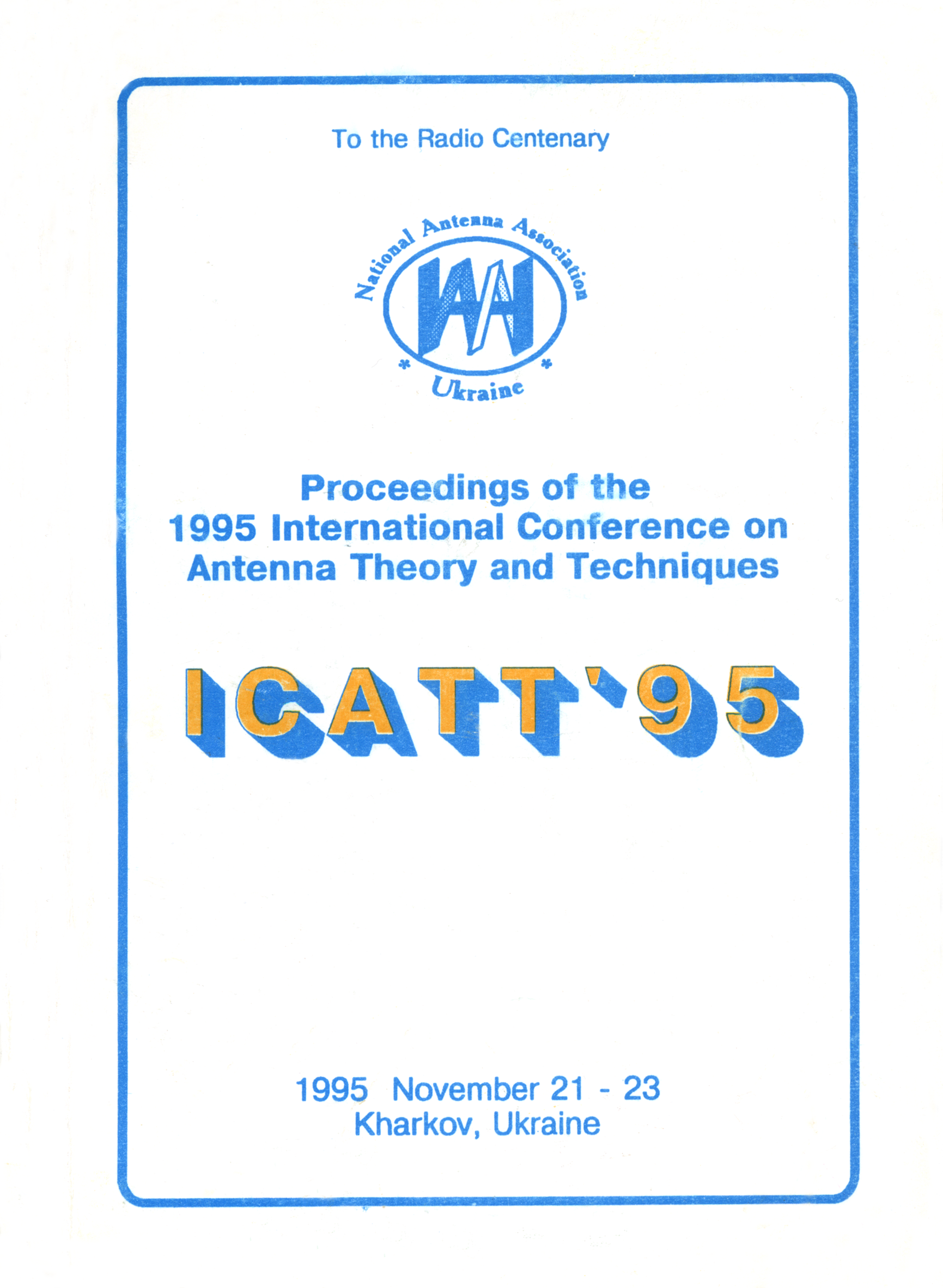Two-stage robust algorithm of antenna array adaptation
DOI:
https://doi.org/10.1109/ICATT.1995.1234142Abstract
Let us assume that at the antenna array (AA) input the desired signal periodically is absent, with arrival moments and length of a “passive pause” changing in accordance with a pseudorandom law. For the case of absence of the desired signal at AA input die problem of adaptation algorithm synthesis is represented in the form of
*, (1)
where W is the N-dimensional vector of weight coefficients; Rxx is the correlation matrix of input signals. An eigen matrix vector Rxx corresponding to its minimum eigen is the solution W, of the problem (1), and in this case W, defines characteristics of the nulled pattern in the noise-arrival directions. Consequently, transforming Wl we can define noise-arrival direction and form L (L being the number of noise sources) matrices of the form Rjj = *, φjl is the phase shift, caused by the noise delay at the l-th antenna element relative to the first one. In the case of the desired signal presence at AA input we formulate optimization problem
* (2)
where *, θj1, θj2 are suppression sector bounds of the j-th noise; αj is a positive real coefficient. We represent the problem solution in the form of recurrence procedures
* (3)
Y+ = *, μk is a step constant; Pr{•} – a projector into hypersphere of the unit radius. Algorithms (3) converge on a global scale and provide the efficiency of AA approaching the potentially achievable one.

